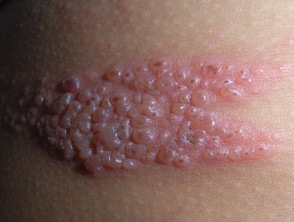Pets Travel Container
Many injuries, deaths, and escapes can be attributed to either the pet trying to escape the kennel and as a result hurting its paws and/or gums, or due to actual escape.
Escapes can be due to a variety of causes. For example a dog can chew its way out of the kennel if it can get its upper and lower teeth between slits or holes in the plastic sufficient enough to apply force; dogs and cats may be able to push the door open or partially open and escape; the kennel lock is broken or not properly latched; or the kennel itself is not properly and securely assembled. For further information on the types of injuries of transported pets, please go to the Department of Transportation consumer report page at: http://airconsumer.ost.dot.gov/reports/index.htm Go down the long report to the very last page for animals incidents. The reports are by month and year.
Tips on Selecting a Travel Container for your pet:
- Look for one that is put together securely, e.g., locking bolts
- Look for metal doors instead of plastic (pets may be able to chew through or bend/buckle plastic doors
- Stronger doors have 4 metal rods that fasten the door to the container
- Ensure door lock mechanism is strong and effective
- No wheels -- most - if not all - airlines will not accept a container with wheels
- Airlines or Air transport organizations do not certify containers. Statements such as "airline accepted" or "IATA Approved" are misleading.
Acclimate:
Be sure to "acclimate" your pet to the kennel it will be traveling in. Let it spend varying lengths of time in the kennel several days before travel so that it is familiar with it. Some pets are stressed severely by being placed in a strange cage. Also, you may wish to put some article of clothing that you have worn into the kennel during transportation. This may help calm the pet. An old T-shirt that you have slept in for one or more nights will work well.
Sedation:
Sedation of your pet is not generally recommended for air travel. The pets safety is at risk. Please refer to a statement from the American Veterinary Medial Association (AVMA)
Travel Abroad:
Always check with the destination a month or more in advance of your trip. Each country has their own set of rules, some simple, some complex, and some require quarantine. Please Go to this page: http://www.aphis.usda.gov/regulations/vs/iregs/animals/. Also check with one of our State offices for more information and/or to have health certificates "officially" endorsed (some countries require government endorsement). You can find your state office here: http://www.aphis.usda.gov/animal_health/area_offices/
Don't Forget:
Many Animal Welfare Organizations have information on pet travel on their websites. It is easy to find these organizations through a web search on such words as "pet travel" etc.
Many injuries, deaths, and escapes can be attributed to either the pet trying to escape the kennel and as a result hurting its paws and/or gums, or due to actual escape. Escapes can be due to a variety of causes. For example a dog can chew its way out of the kennel if it can get its upper and lower teeth between slits or holes in the plastic sufficient enough to apply force; dogs and cats may be able to push the door open or partially open and escape; the kennel lock is broken or not properly latched; or the kennel itself is not properly and securely assembled. For further information on the types of injuries of transported pets, please go to the Department of Transportation consumer report page at: http://airconsumer.ost.dot.gov/reports/index.htm Go down the long report to the very last page for animals incidents. The reports are by month and year.
Tips on Selecting a Travel Container for your pet:
- Look for one that is put together securely, e.g., locking bolts
- Look for metal doors instead of plastic (pets may be able to chew through or bend/buckle plastic doors
- Stronger doors have 4 metal rods that fasten the door to the container
- Ensure door lock mechanism is strong and effective
- No wheels -- most - if not all - airlines will not accept a container with wheels
- Airlines or Air transport organizations do not certify containers. Statements such as "airline accepted" or "IATA Approved" are misleading.
Acclimate:
Be sure to "acclimate" your pet to the kennel it will be traveling in. Let it spend varying lengths of time in the kennel several days before travel so that it is familiar with it. Some pets are stressed severely by being placed in a strange cage. Also, you may wish to put some article of clothing that you have worn into the kennel during transportation. This may help calm the pet. An old T-shirt that you have slept in for one or more nights will work well.
Sedation:
Sedation of your pet is not generally recommended for air travel. The pets safety is at risk. Please refer to a statement from the American Veterinary Medial Association (AVMA)
Travel Abroad:
Always check with the destination a month or more in advance of your trip. Each country has their own set of rules, some simple, some complex, and some require quarantine. Please Go to this page: http://www.aphis.usda.gov/regulations/vs/iregs/animals/. Also check with one of our State offices for more information and/or to have health certificates "officially" endorsed (some countries require government endorsement). You can find your state office here: http://www.aphis.usda.gov/animal_health/area_offices/
Many Animal Welfare Organizations have information on pet travel on their websites. It is easy to find these organizations through a web search on such words as "pet travel" etc.
Source
Animal and Plant Health Inspection Service APHIS
More Information:
-
Importation of Pets and Other Animals Into the United States
-
Pet Travel
-
Pets Travel Container
-
Diseases from Dogs
-
Diseases from Cats
-
Choosing a Pocket Pet
-
Lymphocytic Choriomeningitis Virus from Pet Rodents
-
Pregnant Woman and Toxoplasmosis
-
You Can Prevent Toxoplasmosis (Toxo)
-
HIV. Preventing Infections from Pets
-
You can Prevent Cryptosporidiosis






